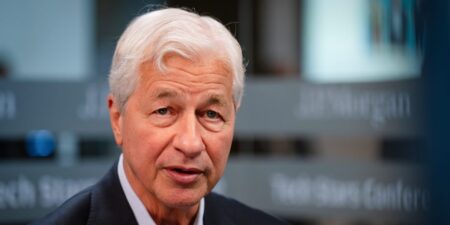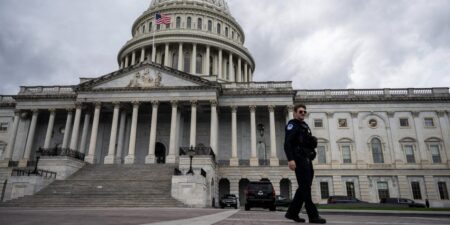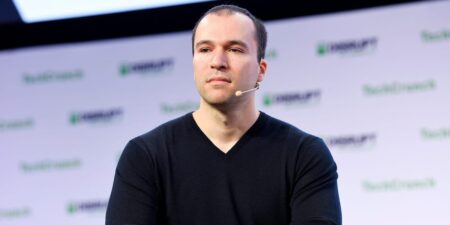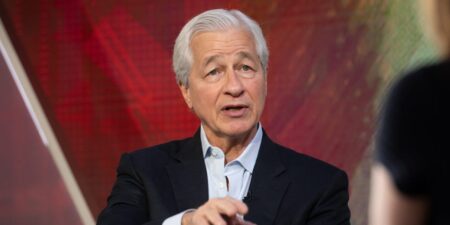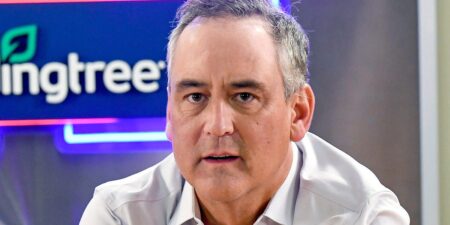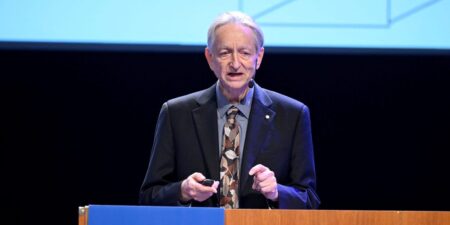The US economy is strong, but America may be entering an era of “jobless growth” because of artificial intelligence, Goldman Sachs wrote in a Monday note.
“The modest job growth alongside robust GDP growth seen recently is likely to be normal to some degree in the years ahead,” analysts at Goldman Sachs wrote.
They added that this trend is likely to continue, with most potential growth coming from AI-driven productivity. Meanwhile, population and lower immigration would contribute only modestly to the labor supply.
There are already signs of a weaker job market, wrote the analysts.
The analysts pointed out that job growth outside the healthcare industry has turned negative in recent months, and that corporate management teams are increasingly focused on using AI to reduce labor costs — a shift that could weigh on hiring long term.
AI’s uneven impact on the workforce
However, concerns about technology displacing workers are nothing new, Goldman’s analysts acknowledged.
Over the past decade, there have been growing concerns that new technologies could eliminate jobs faster than they create new ones. Until recently, that disruption hasn’t shown up clearly in the data.
But that may be starting to change.
“Over just the last few years, AI does appear to be hurting the employment prospects of the most closely exposed workers, such as young technology workers,” the analysts wrote.
Employment growth has already turned negative in the most AI-exposed industries, even if the broader impact remains modest for now, they added.
“While we are skeptical of the boldest claims that rapid technological progress could lead to very high unemployment, some transitional friction is possible,” wrote Goldman’s analysts.
They described that friction as a normal part of the economy adjusting to new technologies.
“Innovation and greater spending power as output and income rise will also create new work opportunities that offset job losses,” they wrote.
The bank’s research shows that past waves of technological progress have temporarily increased unemployment and forced more workers to change occupations.
The kind of innovation matters, too: Some technologies create jobs, while others, like many AI tools, replace them.
“If AI is mainly labor-substituting, it could present a greater challenge to maintaining full employment,” the analysts warned.
The risk of a ‘jobless recovery’
Still, the true test for the AI economy may not come until the next downturn, Goldman’s analysts wrote.
“In past recessions, employment of workers in routine occupations has dropped sharply — especially when they followed productivity booms — and did not recover after,” they wrote.
The analysts point to the early-2000s “jobless recovery” as a case in point. After the 2001 recession, US GDP bounced back quickly thanks to tech-driven productivity, but total employment lagged for years as companies used the downturn to cut jobs.
“A leading explanation for this phenomenon is that companies use recessions to restructure and streamline their workforce by laying off workers in less productive areas,” they wrote.
“This is especially true when recessions follow productivity booms that give companies some pent-up ability to cut labor costs and improve efficiency without significantly hurting their productive capacity,” they added.
Higher unemployment isn’t the only risk. AI could also deepen inequality, rewarding workers who can leverage new technology while squeezing out midlevel jobs.
AI could “hollow out” middle-income white-collar roles, much like factory automation once displaced skilled blue-collar workers, the analysts wrote. Early evidence suggests that in some cases, the technology might actually help lower-skilled workers more than higher-skilled ones.
A silver lining for inflation—and the Fed
There’s one upside to all this: Faster productivity growth tends to keep inflation in check, they wrote.
That could give the Federal Reserve room to cut rates even if unemployment drifts higher, mirroring its approach during the early-2000s recovery.
Goldman’s latest report on AI’s impact comes as the US grapples with a range of uncertainties, including the lack of official job data amid the government shutdown, the fallout from President Donald Trump’s import tariffs, and the seismic disruption caused by AI.
In September, the private sector lost 32,000 jobs, according to ADP data.
The outlook wasn’t brighter by other metrics.
Workforce analytics firm Revelio Labs reported a 17.2% drop in job openings from a year earlier. Challenger, Gray & Christmas found that hiring plans have fallen to their lowest level since the Great Recession, with the smallest number of new hires announced in the first nine months of a year since 2009.
Read the full article here








